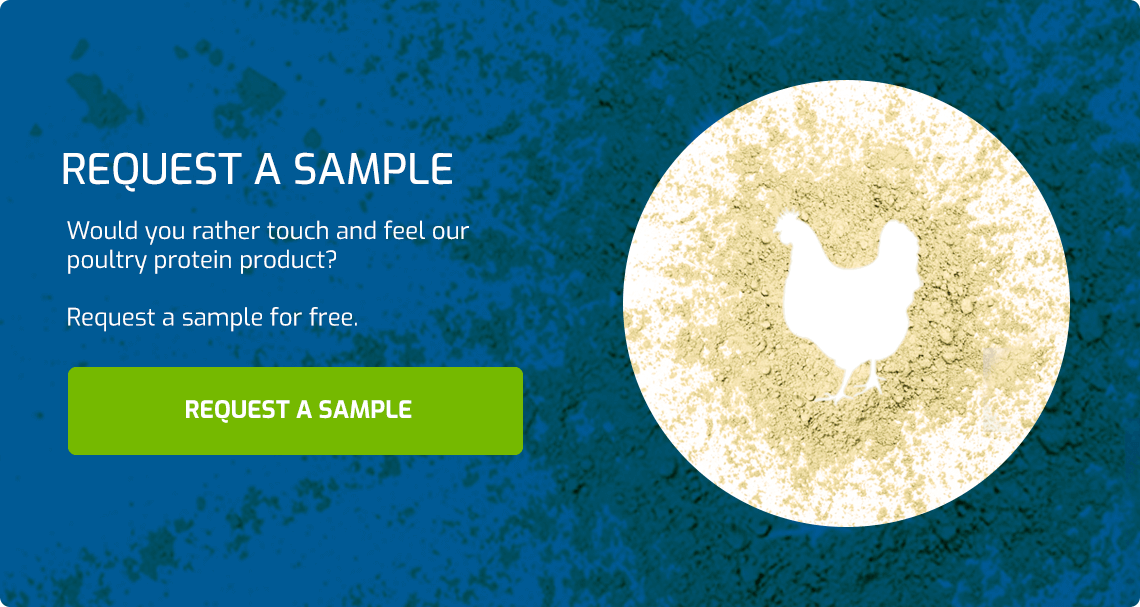- +31(0)499-364-820
- Noticias y blogs
-
EspañolES
-
If your meat product recipe is high in fat, adding chicken or turkey protein is a worthy consideration. Here we explain why, plus outline examples of the fat absorption solution in sausages, pepperoni, and chicken hams and salamis.
When you’re creating a meat recipe that’s high in fat (e.g., sausage, pepperoni, salami, and/or doner kebabs), chicken or turkey protein, and specifically Sonac’s functional chicken protein (QBind FPP C) or functional turkey protein (QBind FPP T), should also be an ingredient in the recipe. That’s because adding poultry protein helps to keep the meat product, and the fat that’s in it, stabilized. Without it, the fat may come out during storage or cooking—both of which hinder the visual appeal and texture of the poultry product for the consumer.
Adding chicken or turkey protein isn’t the only solution for fat absorption. Some poultry products include milk proteins, soy protein, or carrageenan to keep the meat product emulsified. But functional poultry protein is the superior choice.
How chicken or turkey protein can improve sausages, salamis, and other meat recipes
Poultry protein doesn’t act like a classic emulsifier, though. Instead, the chicken or turkey protein helps build a frame of protein—and it makes the meat matrix bigger and denser. That stronger and larger frame traps the water and fat in the recipe and does a better job of keeping both in the meat product during storage and when it’s cooked.
Here are three specific examples of the benefit of adding chicken protein and turkey protein to your high fat meat product recipe:
1. In pepperoni
During the curing process for pepperoni, poultry pepperonis are stored between 30 and 40 degrees, and at this temperature fat can drip out of the pepperoni. This is problematic both because it will lower the total yield of the product and also it will result in a drier pepperoni—and drier means it’s potentially less delicious to a consumer. Third, the leaked fat can give the outside of the pepperoni a greasy coating, which also is unappealing to a consumer. Adding poultry protein to a pepperoni recipe, thus, helps with yield, eating quality, and visual appeal.
2. In salamis and chicken hams
In both salamis and chicken hams, other ingredients are often added to emulsify the meat matrix and hold the ingredients together. In salamis, it’s soy protein that’s typically added, and sometimes milk proteins. In chicken hams it’s carrageenan or modified starch. Adding chicken or poultry protein instead helps in two ways: it eliminates a potential allergen and also creates a cleaner ingredient list—both of which are trends that are popular among consumers currently.
3. In sausages
Sometimes fat builds up at the ends of a sausage and during cooking that fat will leak out. Adding chicken or turkey protein to your sausage recipe will keep that fat in the sausage and prevent it from seeping out when cooked.

Overall, there’s a limit to how much fat and water can be contained within a meat product, and adding chicken or turkey protein allows a food producer to increase how much fat and water stays trapped inside the high fat meat product after storage and/or cooking. Keeping that fat (and water) inside the food product yields a product that’s tastier and more visually appealing to the consumer. For the food producer, it also helps to improve yield and that has cost benefits.
Learn more about the poultry protein
Learn more about the benefits of Sonac’s functional poultry proteins QBind Chicken FPP C and QBind Turkey FPP T, and download the leaflets.
You can also request a sample and test this protein in your food product. Fill out a request here and a product specialist from Sonac will have a sample sent.
